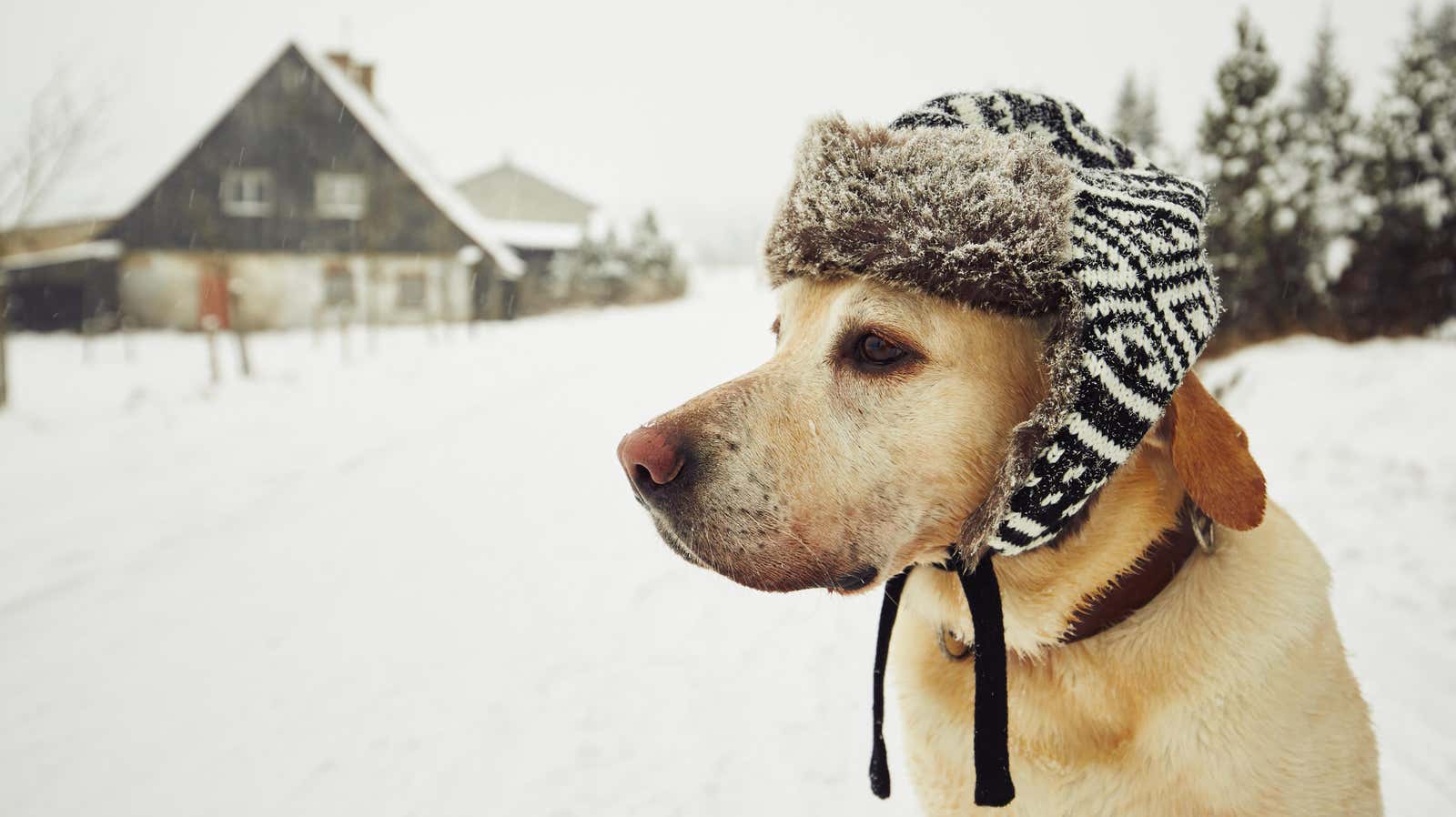How Cold Is “cold” for a Dog?

Winter may not be everyone’s favorite season, but it does produce some of the best (or at least the cutest) content on the internet: videos of puppies playing in the snow. But a quick romp in fresh powder is one thing, but what about staying outside or longer?
In short, the amount of time a dog can spend outdoors in cold temperatures depends on a number of factors, including its breed, size, age, health, and coat. Here’s what you need to know.
How long can dogs stay outside in winter?
According to the American Kennel Club (AKC), when it comes to how long dogs can safely stay outside on days with colder temperatures, there’s no one size fits all rule. But generally speaking, larger, thicker-coated dogs can stay outdoors longer in cold weather than smaller, single-coated or hairless dogs, which can spend more time outdoors on hot days but are not adapted to the cold.
In addition to their size and breed, you also need to consider factors like your dog’s age, general health, and coat length when determining how long it’s safe for them to be outside in the winter, but veterinarian Dr. Sarah Wooten shared these recommendations with the AKC. :
- Puppies under 8 weeks old : Keep indoors in cold weather.
- Toy Breeds : Keep indoors in cold weather.
- Brachycephalic breeds (eg dogs with short noses such as pugs and French bulldogs): Keep indoors (especially during sports).
- Small Breeds : Limit walks below 32ºF to 10-15 minutes.
- Large Breeds : Limit walks below 32ºF to 30-60 minutes.
- Arctic Breeds : Can stay outdoors in the cold indefinitely while they acclimate.
The American Society for the Prevention of Cruelty to Animals (ASPCA) has an even simpler recommendation: “If you’re too cold, it’s probably too cold for your pet, so keep your animals inside.”
Signs of hypothermia in dogs
If a dog stays outside for too long in cold weather, they are at risk of developing hypothermia, which occurs when their body temperature drops below 99°F. In addition to shivering and curling up to keep warm, other signs of hypothermia in dogs, according to the AKC include dilated pupils, rapid heart rate followed by a slow heart rate, lethargy, and slow reflexes .
For more information on dog safety in cold temperatures, check out some of the resources provided by the AKC , ASPCA , and the Red Cross .